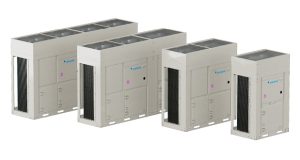SFMI FRAMEWORK
The SFMI’s framework was developed to address the consistency and accuracy gaps in FM’s measurement of scope 1, 2, and 3 emissions. This will enable the industry to position itself to achieve reductions consistent with achieving net zero emissions and establish FM as leaders in delivering a zero-carbon operational built environment. FM providers and property managers have been encouraged to adopt the SFMI framework, which comprises three key components and is suitable for different audiences:
- Framework for corporate FM providers Scope 3 Emissions: A “top-down” methodology to measure relevant emissions sources from a corporate level. Including a wider range of scope 3 emissions so that FM’s can target customer emissions.
- Framework to measure emissions of FM activities: A tool to enable the “bottom-up” measurement of contract-level emissions to allow FM to identify and take responsibility for where reductions can made in scope 1,2 & 3 on-site with clients.
- Alignment with RICS Whole Life Carbon Assessment: Application of the framework to align with the B8 component of the RICS Whole Life Carbon Assessment for the Built Environment (WLCA) applied on a single building scale.
In piloting phase 2, the SFMI and its participants were able to learn much about their own practices. The pilot group calculated their emissions based on conducting both the “top-down” corporate inventory method, and the “bottom-up” contract-based approach.
Here are insights into the programme that we are taking forward into phase 3 of the project.
EMISSIONS REPRESENTED HAVE A SIGNIFICANT LEAN TOWARD PURCHASED GOODS AND SERVICES
Companies were encouraged to collate and report emissions according to the framework for the “top-down” corporate approach, and then identify up to four contracts to calculate emissions using the “bottom-up” approach. In doing so, for both approaches, all pilot companies found the largest group of emissions stemmed from their purchased goods and services. These emissions were generally calculated using a spend-based approach. Also high on the list of scope 3 emissions were employee commuting, and for those that could calculate it – the downstream transportation and distribution of goods to customers ranked highly.
It is important to identify the top sources of emissions so that we can ascertain the material emissions to reduce for the future.
OVERALL EMISSIONS AND HOW THEY ARE APPORTIONED TO COMPANIES
While the top-down approach will be practiced by most businesses, we recommend being selective about who the bottom-up approach should be provided for. This should initially be reserved for high priority and more carbon mature customers, due to there being more work involved in the granularity of data collection. By ensuring accuracy, the FM can work in partnership with the customer to reduce the emissions and show their reduction pathway. Generally speaking, when businesses apportion their emissions to a customer, a business will measure their total corporate carbon footprint, and then allocate a proportion of their total emissions based on either contract headcount or the value of the contract in relation to total corporate revenue or headcount. When applying both these approaches, the SFMI found that there was no consistency between which is higher – value based on headcount or revenue. But the variable that can skew the data can be the services delivered. For example, this will depend on how labour intensive the service is.
However, when using the “bottom-up” approach, which required a granular look at emissions that were part of the service, we found evidence that when calculated using high-quality purchased goods and services data (due to its significance), the emissions allocated to specific contracts using the bottom-up approach can be higher than the top-down allocation estimated method.
This represents a risk of under-reporting to high priority carbon-mature customers, and can lead to accusations of greenwashing. Therefore, a standardised approach is needed for industry protection.
DATA QUALITY VARIES
Data quality across the trial companies varied, which is to be completely expected. Each business has its own method of reporting and tracking activities such as spend relating to customers. A key challenge for companies in being able to analyse and understand their contract-allocated emissions is to be able to categorise them across the purchased goods and services required for contracts. Being able to categorise spend across multiple levels will help to make a number of business decisions on reducing emissions for customers. This can include identifying hot-spots of emissions in service levels all the way down to choosing products with lower carbon values.
Improving the categorisation of data from procurement spend will give businesses a unique opportunity to improve the accuracy of emissions allocated to specific customers, and will help them make business decisions that can reduce impact across services delivered.







